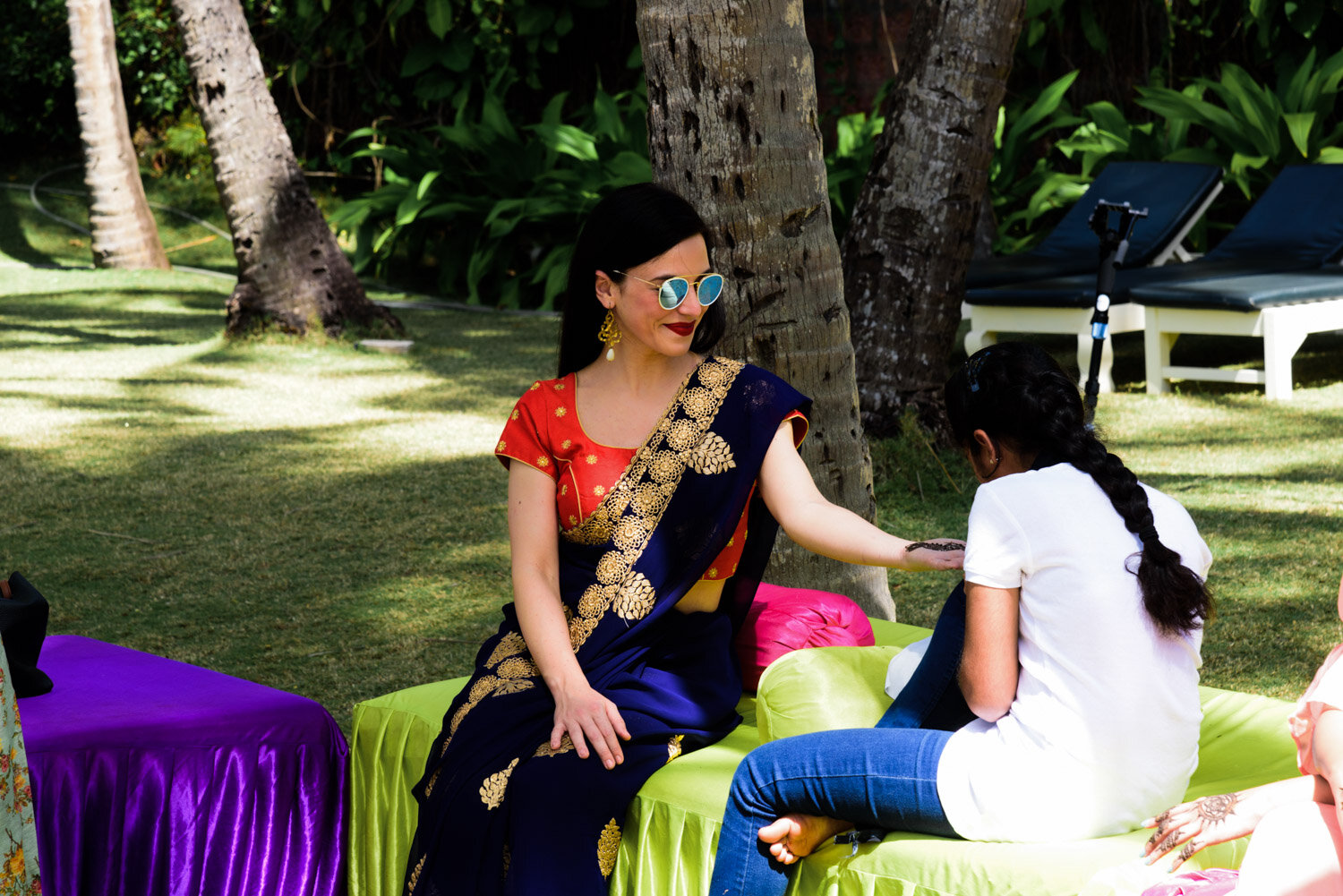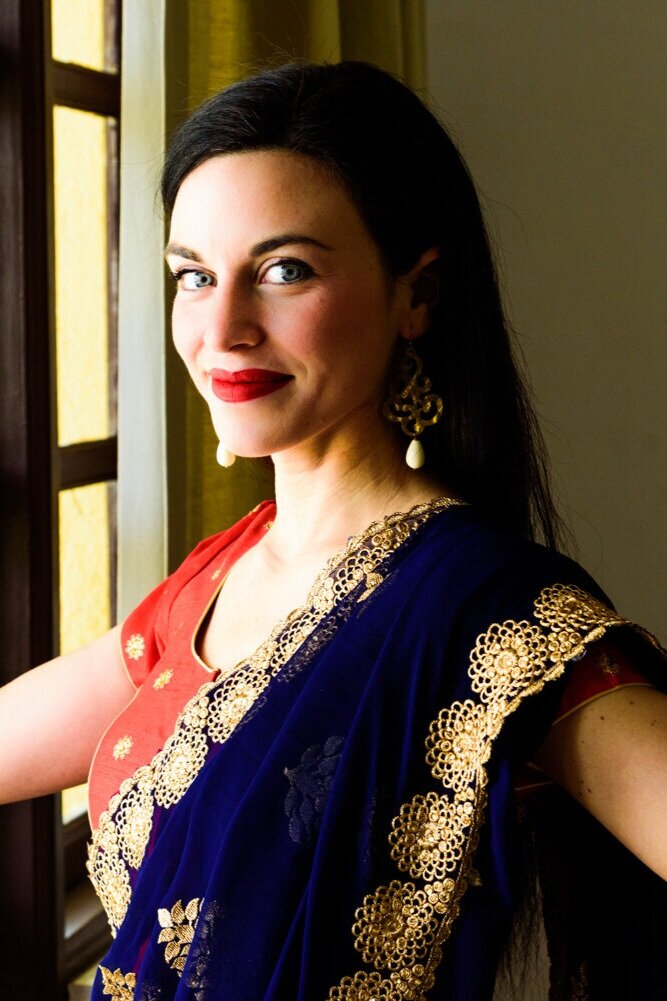An Indian wedding: what to expect
In my bucket list there are not only cities to visit or remote lands to explore. Every destination, or so, is associated with other desires: I wanted to go to Japan in spring during the Hanami, explore the United States on a Mustang along Route 66, it would be nice to explore Finland in February for a sleigh ride through the snowy expanses. And if you had asked me a few years ago if I would like to visit India, I would have said "it would be fabulous to go to India and attend a wedding". One of those great ceremonies, made of colors, perfumes, exotic food, jewels and music.
And as if I had rubbed Aladdin's Genius lamp, in December we received an invitation to a wedding of friends in India, more precisely in Goa, scheduled for February. A less traditional wedding than usual, which took place far from the cities of origin of the future spouses and involved only a "small" crowd of 200 people. Nevertheless, the atmosphere was no less festive.
As pompous as you might imagine an Indian wedding, our austere European minds are not trained to conceive everything that orbits these magnificent ceremonies, and the 3 days we spent in Panjim, the capital, were a succession of surprises and fascinating rituals. So here is a smattering of what awaits you.
THE PREPARATION
The bride spends the day before the ceremony with the women of the two families, having her arms and feet arabesqued with propitiatory drawings made with Henna, representing the bride and groom and a series of other abstract symbols wishing well. The other women participate in the ritual by having only their hands tattooed.
We (the only non-Indians who participated in the ceremony) spent the day looking for local clothes for all 4 ceremonies of which the wedding is made up. Yes, four. Four different moments, each with its own theme, each with an associated color or dress-code, each requesting an appropriate and different attire.
THE MEHENDI
The first of the official ceremonies is the Mehendi: the reception starts in the morning, not too early and not too on time as is the Indian custom. Password: color! Surrounded by colorful furnishings and drapes and festive music, all guests participate in the same ritual as the bride, and have their backs and palms painted as a propitiatory sign. The bride's drawings, which took a whole day, are much more articulated and extensive, but also a small decoration drawn on the hand helps to make you feel more comfortable among the festively decorated crowd.
The meal marks the end of each ceremony: a buffet of curry and other spicy Indian specialities, to be tasted and enjoyed with attention to the untrained palates.
THE EXCHANGE OF THE DOWRY
The afternoon is siesta time for the older relatives, and time to roll into a new saree for the younger participants. The official engagement ceremony takes place in front of all the relatives and the Hindu officiant of the wedding. The families donate their dowry to the future groom or bride, and these gifts (necklaces, jewelry, silver objects) are blessed by the priest.
THE SANGEET
Our theme for the evening event was pastel colors, all in strict coordination with the bride and groom's attire. The evening ceremony is called Sangeet, and consists of a series of dances and songs in which relatives and friends perform to wish the new couple good luck. An incredible whirlwind of clothes and stoles, people choreographing more or less lively songs, unlikely elderly uncles moving in unison on stage, groups of friends performing comic dance steps. The bride and groom dedicate dances to each other, and after one last dance, among convivial laughter about the performance, the dinner buffet begins.
THE HALDI
The second day begins with the Haldi, and the theme is yellow. The Haldi is the ceremony during which, separately for bridegroom and bride, the respective relatives bless the young people by sprinkling them with rice and a turmeric paste. It is said to have not only auspicious significance, but that the properties of turmeric help the skin to shine and the bride and groom to relax in view of the great ceremony.
For the groom's friends, it is mostly the occasion of a sort of bachelor party, where they torture the groom by slipping itchy spices into every possible place!
THE GROOM'S PARADE
Lunch, of course, breaks up the day, and in the afternoon you get ready for the wedding rituals. We took part, dressed in colored silks, in the groom's parade as his guests. This parade is called Baraat: the groom arrives on an adorned white horse, and his friends and relatives follow him in the street dancing to the noisy beat of drums. The bride and her family arrives with a very elegant procession, walking on rose petals and dressed in red, as a sign of fertility. It shines with every possible golden object a human could wear, from very heavy earrings, to showy necklaces, to the elegant nose piercing connected to the hair by a thin golden chain.
THE HINDU WEDDING
The bride and groom exchange flower garlands to put around their necks, and then go under the Mandap, a decorated canopy, against the backdrop of the beautiful sunset over the sea of Goa. An interminable ceremony takes place, putting even the most faithful relatives to the test.
A few hours of singing songs accompany the ceremonies in which the father gives his daughter to the groom, offerings are made in front of the hearth in the middle of the Mandap, in which the bride and groom are tied together and lead a small procession around the fire.
The evening ends with games organized by friends, a few dances involving all the guests, and of course a hearty meal.

















